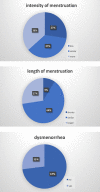Success Rate and Long-Term Effects of Embolization of Pelvic Arteries for the Treatment of Postpartum Hemorrhage
- PMID: 37434998
- PMCID: PMC10331153
- DOI: 10.1159/000527614
Success Rate and Long-Term Effects of Embolization of Pelvic Arteries for the Treatment of Postpartum Hemorrhage
Abstract
Introduction: Postpartum hemorrhage (PPH) is the leading cause of peripartal maternal mortality and accounts for 25% of all maternal deaths worldwide. The most common reasons of PPH are uterine atony, retained placenta, or placenta accreta spectrum. Treatment of PPH depends on the etiology and corresponds to a stepwise approach, which follows the German, Austrian and Swiss guideline for the diagnosis and therapy of PPH in Switzerland. In severe ongoing PPH, hysterectomy has been the ultima ratio for many decades. Nowadays, interventional embolization of the pelvic arteries (PAE) has become a popular alternative. Besides being a highly effective minimally invasive method, PAE avoids hysterectomy with consecutively reduced morbidity and mortality. However, data on the long-term effects of PAE on fertility and menstrual cycle are scarce.
Methods: We performed a monocentric study consisting of a retro- and a prospective part including all women who had undergone a PAE between 2012 and 2016 at University Hospital Zurich. Descriptive characteristics of patients and efficacy of PAE defined as cessation of bleeding were analyzed retrospectively. In the prospective part, all patients were contacted for a follow-up questionnaire regarding menstruation and fertility after embolization.
Results: Twenty patients with PAE were evaluated. Our data showed a success rate of PAE in 95% of patients with PPH; only 1 patient needed a second, then successful, PAE. No patient needed a hysterectomy or any other surgical intervention. In our study, an association between mode of delivery and identified etiology of PPH is observed. After spontaneous delivery (n = 6), the main reason of severe PPH was retained placenta (n = 4), while after cesarean section (n = 14), uterine atony was identified in most cases (n = 8). Regarding menstruation after embolization, all women reported regular menstruation after the breastfeeding period (100%). The majority reported a regular pattern with a shorter or similar duration (73%) and lower or similar intensity (64%). Dysmenorrhea decreased in 67% of patients. Four patients planned another pregnancy, of whom only one had become pregnant with assisted reproductive technology and ended up in a miscarriage.
Discussion: Our study confirms the efficacy of PAE in PPH, thus obviating complex surgical interventions and associated morbidity. The success of PAE does not depend on the primary cause of PPH. Our results may encourage the prompt decision to perform PAE in the management of severe PPH in case of failure of conservative management and help physicians in the post-interventional counseling regarding menstruation patterns and fertility.
Keywords: Embolization; Postpartum hemorrhage.
Copyright © 2023 by The Author(s). Published by S. Karger AG, Basel.
Conflict of interest statement
The authors do not report any potential conflicts of interest. The manuscript has been seen and approved by all authors, and we affirm that the manuscript has not been published previously and is not being considered concurrently by another publication.
Figures
Similar articles
-
[Evaluation of efficacy and safety of pelvic arterial embolization in women with primary postpartum hemorrhage].Zhonghua Fu Chan Ke Za Zhi. 2016 Feb;51(2):81-6. doi: 10.3760/cma.j.issn.0529-567X.2016.02.001. Zhonghua Fu Chan Ke Za Zhi. 2016. PMID: 26917474 Chinese.
-
Outcome of pelvic arterial embolization for postpartum hemorrhage: A retrospective review of 117 cases.Obstet Gynecol Sci. 2014 Jan;57(1):17-27. doi: 10.5468/ogs.2014.57.1.17. Epub 2014 Jan 16. Obstet Gynecol Sci. 2014. PMID: 24596814 Free PMC article.
-
Outcome of pregnancies after pelvic artery embolization for postpartum hemorrhage: retrospective cohort study.Am J Obstet Gynecol. 2015 Oct;213(4):576.e1-5. doi: 10.1016/j.ajog.2015.06.063. Epub 2015 Jul 8. Am J Obstet Gynecol. 2015. PMID: 26164697
-
The Emergent Pelvic Artery Embolization in the Management of Postpartum Hemorrhage: A Systematic Review and Meta-analysis.Obstet Gynecol Surv. 2021 Apr;76(4):234-244. doi: 10.1097/OGX.0000000000000887. Obstet Gynecol Surv. 2021. PMID: 33908615 Free PMC article.
-
Pelvic Artery Embolization for Treatment of Postpartum Hemorrhage.Semin Intervent Radiol. 2018 Mar;35(1):41-47. doi: 10.1055/s-0038-1636520. Epub 2018 Apr 5. Semin Intervent Radiol. 2018. PMID: 29628615 Free PMC article. Review.
Cited by
-
Pelvic Arterial Embolisation in Obstetric and Gynaecological Haemorrhage: A Single-Centre Case Series.Obstet Gynecol Int. 2025 Aug 17;2025:9932410. doi: 10.1155/ogi/9932410. eCollection 2025. Obstet Gynecol Int. 2025. PMID: 40859944 Free PMC article.
References
-
- Devine PC. Obstetric hemorrhage. Semin Perinatol. 2009;33((2)):76–81. - PubMed
-
- Cristina Rossi A, Mullin P. The etiology of maternal mortality in developed countries a systematic review of literature. Arch Gynecol Obstet. 2012;285((6)):1499–1503. - PubMed
-
- Say L, Chou D, Gemmill A, Tuncalp O, Moller AB, Daniels J, et al. Global causes of maternal death a WHO systematic analysis. Lancet Glob Health. 2014;2((6)):e323–e333. - PubMed
-
- Brown BJ, Heaston DK, Poulson AM, Gabert HA, Mineau DE, Miller FJ., Jr Uncontrollable postpartum bleeding a new approach to hemostasis through angiographic arterial embolization. Obstet Gynecol. 1979;54((3)):361–365. - PubMed
-
- Gonsalves M, Belli A. The role of interventional radiology in obstetric hemorrhage. Cardiovasc Intervent Radiol. 2010;33((5)):887–895. - PubMed
LinkOut - more resources
Full Text Sources



